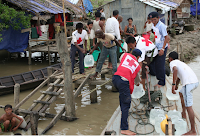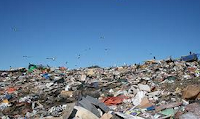
“Logistics” comes originally from the military procedures for the procurement, maintenance, and transportation of material, facilities, and personnel. Generally, logistic refers to a system whose parts interact smoothly to help reach a goal promptly and effectively by optimized use of resources. In emergency, logistics are required to support the organizational and implementation of response operation in order to ensure their timeliness and efficiency.
Below are 10 classes of medical logistics classified by PAHO-WHO: Medicines, Health supplies/kits, Water and Environmental Health, Food, Shelter, Logistic Administration, Personal needs/Education, Human Resources, Agriculture/Livestock and unclassified. Unclassified items include expired supplies, poor labelling supplies etc.

Losses of life or injury are unavoidable when a disaster strikes. To preserve life or health of the disaster victims, it is essential for drugs and medical equipment to be available in sufficient amount. However, there are still problems that may arise due to poor logistic management. For example, there were thousands of help or medical aids received by local government and international organization during the Acheh Tsunami. But ends up, the government spent billions of rupiah to dispose the chemical waste.
Therefore, the authority must optimize the use of all the resources, by storing and distributing the medical supplies properly to assure their quality and rational use. One of the management strategies suggested by the National Volunteer and Donations is to begin the donations activities before the declaration of disaster. Coordinated donation planning and management can avoid difficult problems later such as chaos, waste of time and underutilized volunteers. Besides that, the use of team approach, flexible strategies and information management is essential in disaster operations to manage operational activities.
References:
2. Logistic Management Support, dr. Sulanto Saleh-Danu





